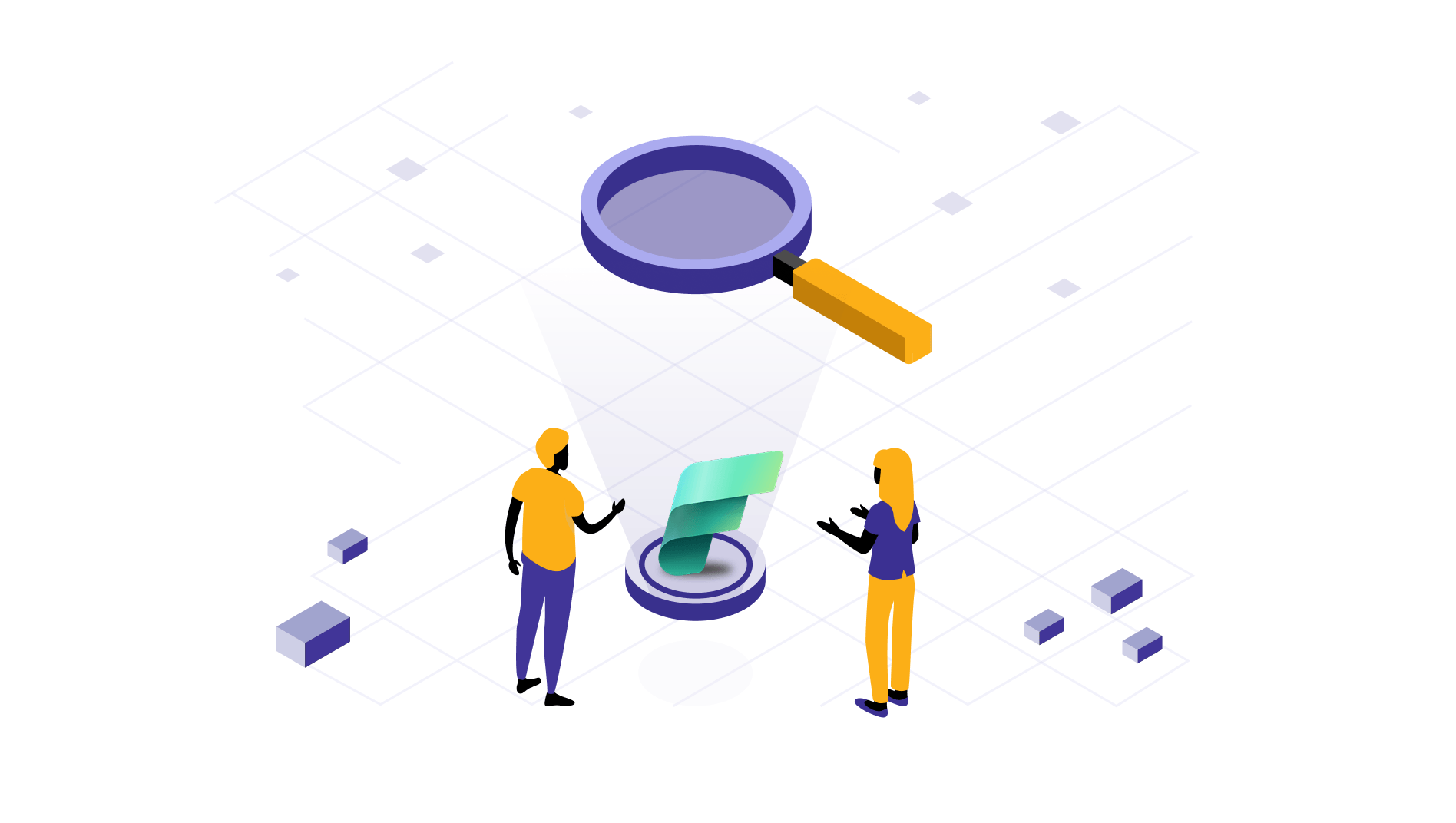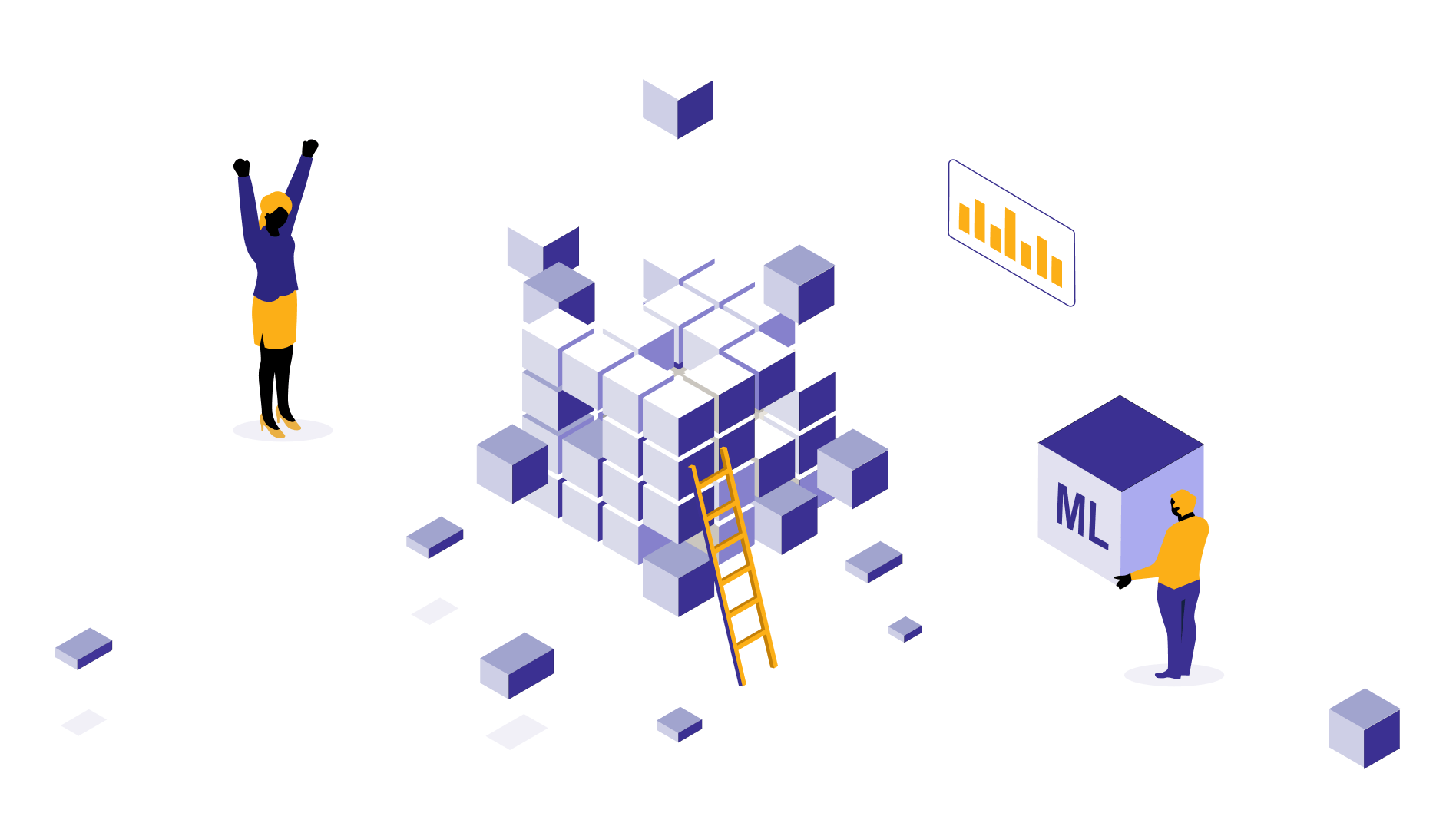Benefits of Microsoft Fabric
From being a unified collaborative team for your team to seamlessly integrating with every Microsoft or other data tool, Microsoft Fabric does it all. What are the other benefits of Microsoft Fabric that you should know? Find them below.

Suresh
Aug 20, 2024 |
7 mins

9 advantages of Microsoft Fabric
1. One platform for all data roles
Microsoft Fabric use cases are for all data roles: Anyone who interacts with data, whether it’s data analysts or scientists or business users, could do it safely in one end-to-end platform. Data engineers can use the data factory to build data pipelines and ingest data from disparate data sources.
Data analysts could use Power BI integration to prepare reports readily and share with business users, without having to prepare data separately. Data scientists could build and deploy models within the same platform, leveraging existing datasets and pipelines built.
Self-service analytics: Let’s also address a major analytics conundrum here about self-service analytics. Many professionals wonder if Microsoft Fabric is replacing Power BI. The answer is no—Power BI is a core part of Fabric, serving as its visualization layer. It empowers end users with self-service analytics, enabling them to create reports and insights without technical expertise.
This is how Microsoft Fabric unites everyone who works on or accesses one copy of data in real-time, while ensuring adherence to centralized governance.
2. Eliminate unwanted costs
A significant Microsoft Fabric benefit is its ability to control IT and cloud costs. This is due to many reasons.
Avoids using multiple software: Foremost is the prevention of cloud sprawl. Having multiple tools for each data experiment means you are paying more bills and spending more resources. Fabric consolidates all of them into one, reducing your burden. Also, you will not require any third-party security or governance applications as Fabric comes with built-in options.
Choose a pricing plan that works for you: Second benefit comes from Fabric’s cost-effective plans. You could opt for pay-as-you-go or reserved instances, anything that suits your company’s data workload. With the help from a Microsoft Fabric consulting company, you can choose the right plan that helps you save more while opting for a scalable infrastructure.
Effective data management: You could save further with Microsoft Fabric through effective data storage. While storing large volumes of data, you could go for a cheap, low-performance tier for less-frequently accessed data.
For one of our customers, we have observed a 30% less cloud bill and more savings while migrating them from Power BI to Microsoft Fabric.
3. Improve productivity
Microsoft Fabric ensures high performance and productivity across your organization in multiple ways.
No need to juggle multiple tools: It’s much easier to access essential tools in one convenient, familiar platform without having to juggle multiple tools. This has proven to be effective for many existing Microsoft customers.
Automation of pipelines: The process is more streamlined now. From data ingestion to analysis and visualization, everything happens on autopilot, accelerating the availability of timely insights to end users. The automation frees up time for data engineers and analysts from not having to perform repetitive tasks.
High-performance infrastructure: scalable fabric infrastructure auto-adjusts to accommodate changing workloads without performance issues. So, high productivity during peak periods without over-provisioning of resources.
More proactive iterations: No more batch processing. Teams can work on real-time data while testing models, make adjustments instantly without waiting for batch processing.
With Fabric being layered with Copilot and AI, analysts and developers find it much easier to interact with data and accomplish tasks faster.
4. Better customer service and experience
Microsoft is known for its global reach and extensive support through internal support teams and partners. So, you can be sure of receiving necessary support and enjoy a smooth transition and experience throughout.
Easy to use SaaS platform: The platform has become much simpler and effective to enhance user experience. From accessing Notebook to building reports to collaborating with other data teams, the platform makes it all possible in a stress-free manner.
Familiar ecosystem: If you have already used Microsoft tools, it will be much easier to adapt and start working without wasting time on training.
Tenant-style architecture that compartmentalizes workloads for different functional areas, regions, or divisions: be able to maintain data and workloads of different teams within tenants while enabling securing sharing and collaboration among them.
Learn more: Snowflake vs Microsoft Fabric
5. Seamless integration
It’s much easier to connect and integrate Microsoft Fabric with other tools and promote real-time analytics.
Connects with Power BI, Microsoft 365, and Azure services: Fabric sits comfortably in your existing infrastructure and connects with other Microsoft tools. You can bring your entire data workload within one umbrella and allow users to collaborate effectively.
Pre-built and custom connectors available to connect with 150+ sources: Fabric comes with the data factory that has both no-code and custom connectors. This can connect with databases, cloud storage, enterprise systems, SaaS applications, and APIs and workflows.
Microsoft Fabric also benefits teams by allowing them to build reusable data models. So, well-utilized pipelines, reduced instances, and no duplication of pipelines.
Automated orchestrations: Fabric comes with automated tools like Logic Apps, Power Automate, etc., to automate data processing and reduce human efforts.
Integration with streaming data sources for real-time analytics: Fabric can connect with devices and applications with streaming data. It can be data from social media platforms or IoT devices. Fabric can tap into these transaction logs, allow engineers to process them, and deliver real-time insights to decision makers consistently. This feature makes the tool perfect for logistics, manufacturing, and supply chain industries as these industries have plenty of continuous data sources and need real-time decision-making support.
6. Scalability
Small businesses or well-grown enterprises, Microsoft Fabric can accommodate both, growing along with data.
Elastic compute: You could scale up instances and storage when there is a high demand and scale down during off-peak times. Also, there is auto-scaling which ensures smooth provisioning of more resources when demand goes up. Elastic compute comes handy for many growing companies to manage their erratic workloads.
Priority-based allocation: You can prioritize crucial operations and pair them with necessary resources so they keep running smoothly during peak times.
Parallel processing: Fabric uses distributed processing for parallel data processing, promising high performance even with higher consumptions.
Big data support: Microsoft Fabric can process all types of data - structured, semi-structured, or unstructured. Its integration with Azure Data Lake and Spark ensures smooth big-data handling, even if it grows.
Learn more: Azure synapse vs Microsoft Fabric
7. Support from active community members
Microsoft has an actively growing tech community filled with developers, IT managers, CIOs, MVPs, and a wide range of business users. Choosing a platform that’s backed by millions of users like this can benefit you the following way.
Community-driven events, meetups, and user groups: Your teams can develop their knowledge and interact with like-minded professionals across the world by being part of local and global Microsoft user groups. Get to participate in community events organized by Microsoft or its tech partners to learn more.
Documentation and learning: From GitHub sources to tutorials to learning modules of Microsoft Fabric, your team can be well-versed with all. Your business can utilize the tool better with knowledge from MVPs and seasoned users and internal Microsoft professionals.
Active Stack Overflow community: Microsoft users are well active on third-party platforms like Stack Overflow and share everything from code snippets to tech solutions.
Grow further with the partner ecosystem: Microsoft has 400000+ partners who are consulting and implementation firms globally. You could get help from these partners and get free consultations, resources, success stories, implementation, or post-deployment support.
8. Low code platforms
Anyone from your team can work with Microsoft Fabric, even those with minimal or no programming skills.
User-friendly interfaces with drag-and-drop options: Finish day-to-day tasks on Fabric with minimal clicks and interactions. Be it report building or pipeline creation or querying, you can finish it within minutes using drag-and-drop options.
Pre-built templates and visualizations: Free up your data engineers’ time and allow them to use pre-built templates, customize and deploy them as per their needs.
Fast prototyping: With low-code and prototyping, you can build models, reports, and analytics fast and iterate faster than usual.
Automate with Power Automate: Automate pipeline creation with low-code pipeline options like Power Automate. Even business users who want insights can operate this without intervention from data team members.
Pre-built AI models: Utilize pre-built AI models of Microsoft Fabric and customize them to automate your AI solutions like predictive analytics, anomaly detection, etc.
9. Time to insights
Real-time analytics is one of the significant benefits of Microsoft Fabric.
Real-time processing: For industries like finance, manufacturing, and logistics, real-time analytics is crucial. Fabric allows real-time data analytics, delivering fast, reliable insights to the end users in no time.
Fast ETL processes: Automated ETL pipelines, pre-built data connectors, and built-in orchestration tools ensure that data from source to business users.
Fast time to market: Let your products and services hit the market faster through accelerated development and fast, real time, accurate insights.
Final thoughts
Summing everything up, Microsoft Fabric can be a perfect tool for organizations needing a secure, collaborative, all-in-one data platform. Our team has been offering consultations and assistance with this tool ever since it’s released in the market. We have gained in-hand experience on the tool through successfully setting this up for many global organizations.
Currently, we are offering free consultations to anyone wanting to know more about the tool and how it’s the right solution for their organization. Join us for a free consultation and get to know unique benefits of Microsoft Fabric for your data landscape.

by Suresh
Suresh, the data architect at datakulture, is our senior solution architect and data engineering lead, who brings over 9 years of deep expertise in designing and delivering data warehouse and engineering solutions. He is also a Certified Fabric Analytics Engineer Associate, who plays a major role in making us one of the early adopters of Fabric. He writes in words whatever he delivers with precision to his clients, consistently voicing out trends and recent happenings in the data engineering sector.



